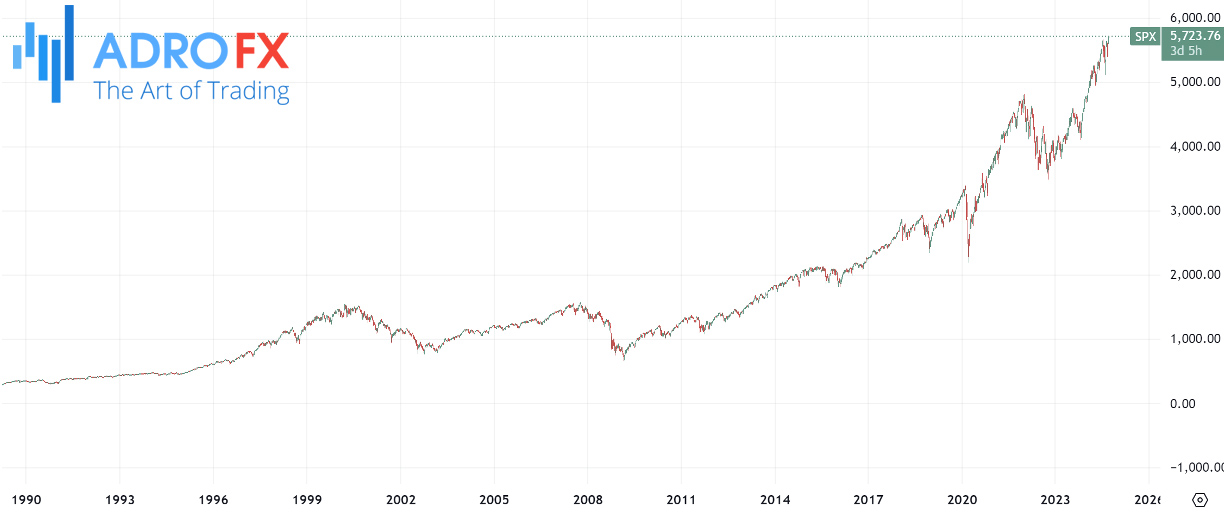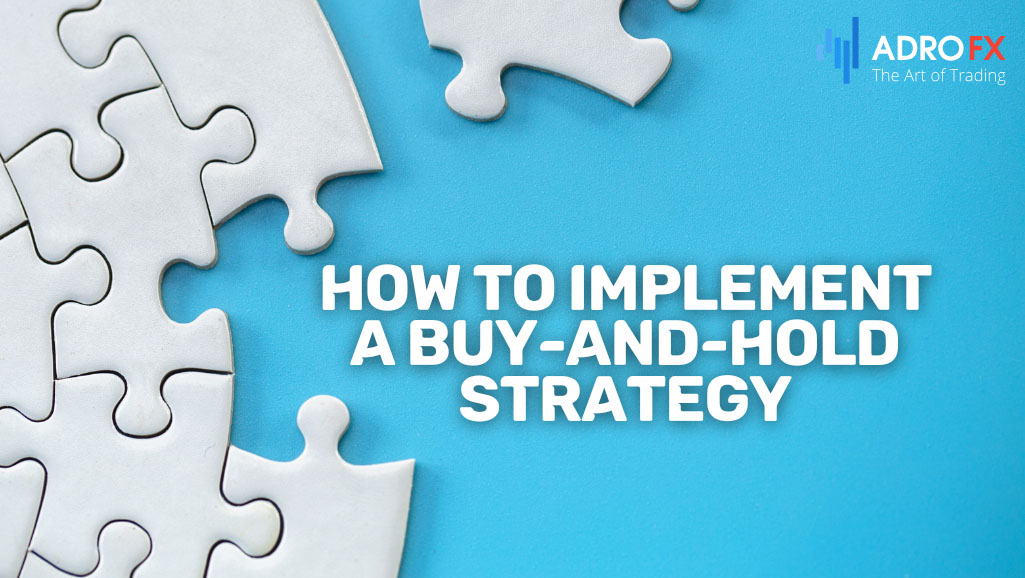The Buy-and-Hold Strategy: Compounding Returns for Future Wealth

Did you know that long-term investors often outperform their short-term trading counterparts by significant margins? This striking statistic highlights the effectiveness of the buy-and-hold strategy, a time-tested approach that allows investors to build wealth while minimizing the stress of daily market fluctuations. Rather than trying to time the market, which can lead to anxiety and inconsistent results, the buy-and-hold strategy encourages investors to purchase assets and hold them for the long term. In doing so, they can focus on gradual growth and the power of compounding returns, rather than getting caught up in the ups and downs of short-term trading.
What Is the Buy-and-Hold Strategy?
The buy-and-hold strategy is a long-term investment approach that focuses on purchasing assets such as stocks, exchange-traded funds (ETFs), bonds, or even real estate and holding onto them for an extended period. Unlike short-term trading strategies that aim to profit from quick price movements, buy-and-hold investors are less concerned with daily or weekly market fluctuations. Their focus is on the long-term appreciation of these assets, allowing time to compound returns and grow wealth.
At the core of the buy-and-hold philosophy is the belief that financial markets, over time, tend to trend upward, even though they may experience periods of volatility and downturns. Instead of reacting to every market dip or surge, investors using this strategy remain patient, trusting that the fundamental value of their investments will rise as the economy grows.
The Key Principles of Buy-and-Hold
Buy-and-hold is rooted in two essential principles: long-term commitment and fundamental analysis. Investors select their assets based on deep research and confidence in the long-term strength of the companies, industries, or markets they invest in. Once the investments are made, they commit to holding them for years or even decades, ignoring the daily market noise. This approach minimizes emotional decision-making and the temptation to engage in market timing, which often leads to buying high and selling low - two behaviors detrimental to successful investing.
A critical advantage of this strategy is that it capitalizes on the power of compounding. By staying invested over long periods, investors can accumulate gains not only from their initial investment but also from the interest or dividends earned on those returns. Over time, this compounding effect can dramatically boost the value of a portfolio, especially in comparison to strategies that involve frequent buying and selling, which often incur higher costs and taxes.
Historical Context: Warren Buffett's Buy-and-Hold Philosophy
The buy-and-hold strategy has been made famous by successful investors like Warren Buffett, whose investment philosophy epitomizes the approach. Buffett’s belief in buying and holding strong companies is encapsulated in his quote: "Our favorite holding period is forever." His strategy revolves around identifying businesses with strong fundamentals, a durable competitive advantage, and sound management, then holding onto those stocks through the ups and downs of the market.
One of Buffett's most famous buy-and-hold examples is his long-term investment in Coca-Cola. He began purchasing shares in the beverage company in the late 1980s and has held onto them for more than three decades. Despite experiencing various market cycles, economic downturns, and global crises, Coca-Cola's stock has continued to grow, providing significant returns. Buffett’s patience and conviction in his investments demonstrate the power of buy-and-hold, as he allowed the company's value to increase over time rather than attempting to profit from short-term movements.
The broader market also reflects this principle. For example, investors who have held onto S&P 500 index funds over the past 20 or 30 years have consistently enjoyed average annual returns of 7–10%, despite market crashes such as the dot-com bubble, the 2008 financial crisis, and the COVID-19 pandemic.

Long-term investment strategies have allowed these investors to weather these storms and come out ahead, compared to those who sold in panic during downturns and missed out on recoveries.
Buy-and-Hold in Modern Portfolios
In today's financial landscape, the buy-and-hold strategy remains a popular choice for retirement accounts, education savings, and other long-term financial goals. This approach aligns with the investment horizon of individuals who have decades to invest, such as those saving for retirement, as well as those who prefer a hands-off approach to managing their portfolios. By minimizing the need for frequent trading and portfolio adjustments, the buy-and-hold strategy not only saves time but also helps reduce transaction costs and capital gains taxes, both of which can erode wealth over time.
In conclusion, the buy-and-hold strategy is ideal for those seeking long-term, sustainable growth. Whether you're investing in individual stocks, ETFs, or other assets, the goal is the same: identify strong investments, remain disciplined, and let time work in your favor. While the short-term market may be unpredictable, the power of patience and commitment to long-term investment can be a highly rewarding strategy for building wealth.
Also read: Why Patience Pays Off: Key Strategies for Long-Term Investors
Advantages of the Buy-and-Hold Strategy
The buy-and-hold strategy offers several advantages that make it a favored approach among long-term investors.
Compounding Returns
One of the most powerful benefits of buy-and-hold is compounding returns. By keeping your investments over time, the returns generated from the initial investment begin to generate their own returns. This snowball effect can lead to significant wealth accumulation as your investments grow exponentially over the years. The longer you hold onto your investments, the more you can benefit from the magic of compounding.
Lower Transaction Costs
A key advantage of buy-and-hold is the reduction in transaction costs. Since you're not frequently buying and selling assets, you avoid the hefty fees and commissions that come with active trading. Over time, these savings add up and can considerably improve your overall returns, allowing your money to stay invested rather than being eroded by constant transaction fees.
Market Timing Avoidance
The pitfalls of market timing are well-known. Trying to predict the market's movements is not only stressful but also fraught with risk. The buy-and-hold strategy eliminates the need to guess when to enter or exit the market. By staying invested for the long term, you avoid the emotional and financial risks of trying to time the market, giving your investments the opportunity to grow steadily.
Buy-and-Hold vs. Active Trading
When comparing buy-and-hold with active trading, the differences in risk, time commitment, and potential rewards become clear.
Buy-and-hold focuses on long-term investment, with an emphasis on letting the market grow over time. It requires minimal intervention, making it a more passive approach. This method allows investors to ride out market volatility and focus on long-term gains, reducing stress and emotional decision-making. The biggest advantage? It capitalizes on the market’s natural upward trend while minimizing costs.
In contrast, active trading involves frequent buying and selling of assets, aiming to capitalize on short-term price movements. While this approach may offer quick gains, it also comes with higher risk and greater transaction costs. Active traders need to be constantly engaged with the market and make quick decisions to capitalize on trends. This requires extensive research, timing, and a tolerance for risk, which can lead to losses if the market moves against the trader’s expectations.
Which Is Better?
The choice between buy-and-hold and active trading depends on an investor’s goals and risk tolerance. If your primary focus is on long-term wealth accumulation with lower risk and less stress, buy-and-hold may be the better option. However, if you have a higher risk tolerance and enjoy the challenge of timing the market, active trading could offer higher potential returns - but at the cost of higher risk and time commitment. Ultimately, the best strategy is the one that aligns with your personal financial goals and comfort level.

How to Implement a Buy-and-Hold Strategy
Successfully implementing a buy-and-hold strategy requires careful asset selection and occasional adjustments to ensure your portfolio remains aligned with your long-term goals. Below are two critical aspects to focus on when building a solid buy-and-hold investment plan.
Choosing the Right Assets
The foundation of any buy-and-hold strategy is selecting the right assets to invest in for the long term. Ideally, you want to focus on stocks, ETFs, or mutual funds with strong growth potential, solid fundamentals, and a proven track record of performance. Look for companies with sustainable competitive advantages, robust financial health, and consistent earnings growth. Blue-chip stocks - those of large, well-established companies - are often popular choices for buy-and-hold investors because of their stability and long-term potential.
In addition to stocks, index funds and ETFs are also excellent choices for long-term investors. These assets provide diversification by giving you exposure to a wide range of industries, sectors, or even the entire market. This diversification helps reduce risk while still benefiting from the overall growth of the market. It's essential to research and select assets that align with your investment goals, risk tolerance, and time horizon, keeping in mind that you’ll be holding them for years, if not decades.
Rebalancing Your Portfolio
While buy-and-hold is a passive strategy, occasional adjustments, or rebalancing, are necessary to maintain your desired asset allocation. Over time, the value of different assets in your portfolio may shift due to market performance. For example, if stocks perform exceptionally well, they may take up a larger percentage of your portfolio than initially intended, exposing you to more risk than you’re comfortable with. Rebalancing involves selling some of the overperforming assets and reinvesting in underrepresented areas to bring your portfolio back in line with your long-term objectives.
Rebalancing can be done annually or whenever significant market shifts occur. However, be mindful not to overtrade, as this can increase transaction costs and disrupt the compounding benefits of long-term investing. By staying disciplined and making strategic adjustments, you can stay on track with your buy-and-hold strategy.
Also read: How to Bet Against the Stock Market: A Guide to Profit from Market Downturns
Risks of the Buy-and-Hold Strategy
While the buy-and-hold strategy is generally considered lower-risk compared to active trading, it still comes with its own set of challenges. Understanding the potential risks can help you navigate them and maintain your strategy in both good times and bad.
Volatility
One of the primary risks of the buy-and-hold strategy is market volatility. The stock market is inherently unpredictable in the short term, with prices frequently swinging due to economic conditions, geopolitical events, or changes in investor sentiment. Long-term investors are not immune to these fluctuations, and the value of your portfolio could drop significantly during market downturns or recessions.
However, the key to overcoming volatility lies in maintaining a long-term perspective. Historical data shows that despite short-term market downturns, stock markets tend to trend upward over the long run. By holding onto your investments through turbulent times, you give your assets a chance to recover and benefit from the eventual market upswing. Essentially, weathering market downturns requires patience and confidence in your chosen investments.
Staying Disciplined
Another significant risk of the buy-and-hold strategy is the psychological challenge of staying disciplined, especially during market crashes or corrections. In times of crisis, it’s tempting to panic-sell your investments to avoid further losses, but this reactive behavior can undermine your long-term strategy. Selling during market downturns often locks in losses, preventing you from taking advantage of future recoveries.
Successful buy-and-hold investors must maintain discipline, adhering to their original strategy even when emotions run high. It's essential to trust your investment research and stay committed to your long-term goals, avoiding the urge to make knee-jerk decisions based on short-term market movements. Using strategies like setting clear investment goals, regularly reviewing your asset allocation, and maintaining a diversified portfolio can help you stay focused during challenging times.
By recognizing and preparing for the psychological and market risks inherent in buy-and-hold, investors can better withstand the ups and downs and ultimately achieve their long-term investment objectives.

Is the Buy-and-Hold Strategy Right for You?
The buy-and-hold strategy may not be suitable for every investor, but for those with specific characteristics, it can be a powerful way to grow wealth over time. Understanding your investment goals, risk tolerance, and time horizon is key to determining whether this strategy aligns with your financial objectives.
Investor Profile: Who Benefits from Buy-and-Hold?
The buy-and-hold strategy is typically ideal for investors with long-term goals, such as saving for retirement, funding a child’s education, or building generational wealth. These investors are not looking for quick gains but are instead focused on steady growth over time. The strategy works best for those who can commit to leaving their investments untouched for a decade or more, allowing compounding returns to work their magic.
Additionally, investors who are comfortable with market volatility and possess a high-risk tolerance are more likely to benefit from buy-and-hold. Short-term market fluctuations can cause anxiety, but long-term investors understand that these dips are a natural part of market cycles. By holding onto their investments during turbulent times, they position themselves to benefit from eventual market recoveries. Investors who can ignore daily market movements and maintain focus on their long-term objectives tend to be the best candidates for this strategy.
Finally, buy-and-hold may appeal to those who prefer a hands-off approach to investing. Rather than actively managing their portfolios and timing the market, buy-and-hold investors can take a more passive stance, making occasional adjustments when necessary but primarily letting their investments grow over time.
If you have long-term financial goals, a tolerance for risk, and the discipline to stay the course through market fluctuations, the buy-and-hold strategy could be the right fit for you.
Also read: Consistency in Trading: From Turbulence to Tranquility
Conclusion
In the fast-paced world of investing, where many traders seek instant gains through constant buying and selling, the buy-and-hold strategy stands out as a disciplined and effective approach for long-term wealth creation. By focusing on the fundamentals of investments and allowing the power of compounding returns to take effect, investors who follow this strategy are often rewarded with significant financial gains over time.
The benefits of buy-and-hold are clear: lower transaction costs, reduced risks associated with market timing, and the ability to ride out short-term volatility while benefiting from the market’s overall growth. Historical examples, from Warren Buffett to index fund investors, highlight the effectiveness of remaining committed to quality investments over the long run. These real-life success stories show that patience, discipline, and a long-term outlook are essential ingredients for achieving financial success.
If you're looking to take a more passive approach to investing while still building wealth, the buy-and-hold strategy is worth considering. For many investors, it’s not about the constant thrill of buying and selling but the steady growth that comes from patience and commitment to their financial plan.
To learn more about how to implement this strategy or explore other investment options, check out the tools and resources available on AdroFx. Whether you're just getting started or looking to refine your approach, we’re here to help you achieve your long-term financial goals.
About AdroFx
Established in 2018, AdroFx is known for its high technology and its ability to deliver high-quality brokerage services in more than 200 countries around the world. AdroFx makes every effort to keep its customers satisfied and to meet all the trading needs of any trader. With the five types of trading accounts, we have all it takes to fit any traders` needs and styles. The company provides access to 115+ trading instruments, including currencies, metals, stocks, and cryptocurrencies, which make it possible to make the most out of trading on the financial markets. Considering all the above, AdroFx is the perfect variant for anyone who doesn't settle for less than the best.










